Which service did best in the military recruiting boom? The numbers are in
- By Hope Seck
Share This Article
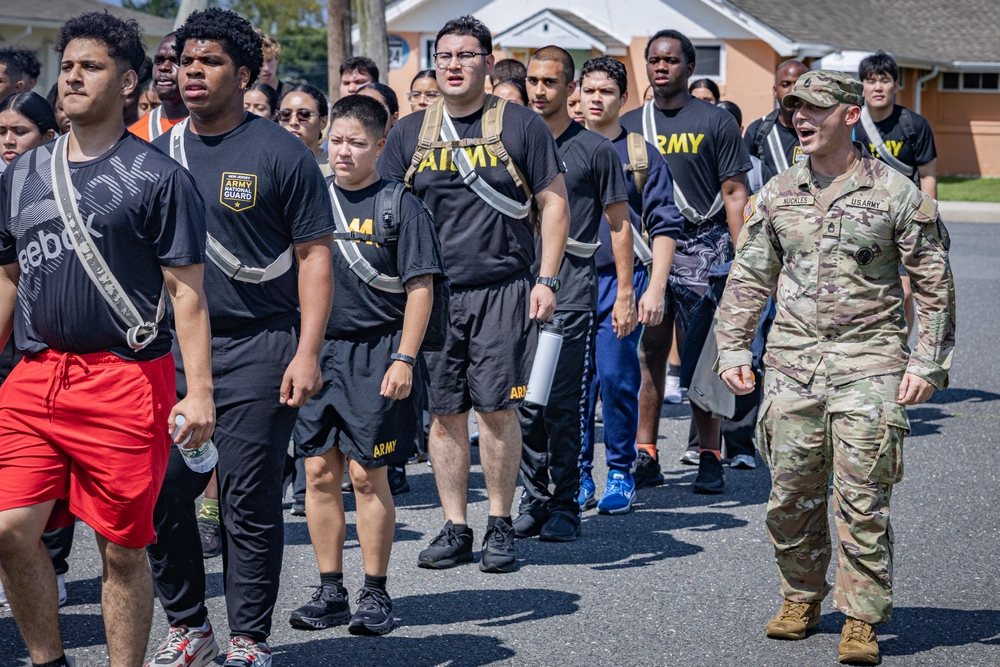
Ever since November 2024, military recruiting has enjoyed a remarkable tailwind. Though the community is divided about the cause of a burgeoning recruiting boom – with the White House and Pentagon leader Pete Hegseth crediting a “Trump bump” and the hard line the Defense Department has taken on lethality and “warrior ethos,” and the services focusing on a changing economy and their own efforts to reach young people – it came as no surprise that the services exceeded their targets.
But how did the services stack up amid near-historic accessions? Now that the fiscal year is over and the numbers are in, we have the answers.
Army
The recruiting woes of a few years ago now seem to be truly in the past for the Army. After announcing in June that it had met its accessions goal of 61,000 soldiers four months early, the service continued to press its advantage. In the active component, the Army recruited 58,011 Soldiers against a goal of 52,400 for a total of nearly 111% of the target, or more than 5,000 surplus, according to the latest numbers, released in August.
That gives the service the highest accessions percentage of all for 2025. And with that momentum, the service is already adjusting some of the efforts it launched in recent years to grow the recruiting pool. The Future Soldier Preparatory Course, a program that lasts up to 90 days and aims to increase prospective recruits’ fitness and academic performance to within Army eligibility parameters, is changing to restrict entry to those who fall short of either physical or scholastic qualifications, but not both.
While it’s not clear if recruiting will remain as strong as it has over the last year, the outlook for the Army stands to stay bullish for a while. According to testimony from Army Secretary Dan Driscoll, the service started Fiscal Year 2026 with some 25,000 soldiers in the Delayed Entry Program, or nearly half of the annual recruiting mission.
Navy
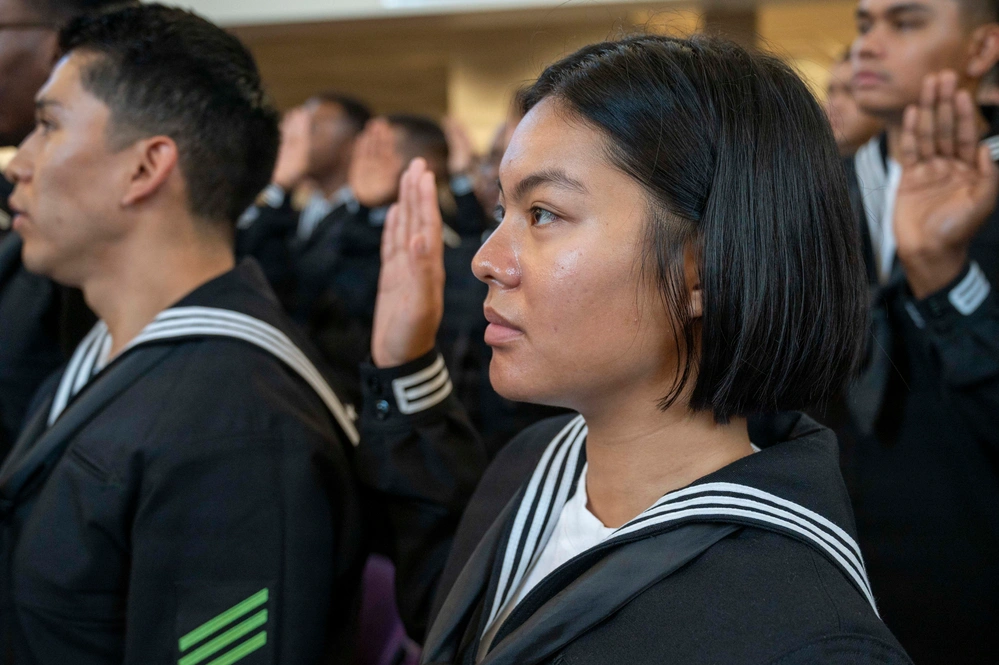
The Navy also reached its recruiting target with three months to spare, a dramatic turnaround after missing the goal entirely in 2023. As of August, the service had recruited 39,936 future sailors from its goal of 37, 049, for a total of nearly 108%, the second-highest total. In all components, the Navy recruited 44,096 future Sailors against a goal of 40,600 – the highest recruiting total since 2002.
In a round-table with reporters just before the end of the fiscal year, Rear Adm. James Waters, head of Navy recruiting command, cited a plus-up of Navy recruiters and efforts to cut red tape and help them bring in recruits faster as components of the service’s success. Like the Army, the Navy is taking steps to tighten up its standards too, pulling significantly back on the numbers of low-scoring recruits it had brought in for remedial training. It will, however, keep a small number of these recruits to provide a broader opportunity to serve.
“Many times, these young people that are scoring [lower] were disadvantaged in how they were educated and developed and come from difficult personal situations,” Waters told Navy Times. “It’s important to me and it’s important to the recruiters, more importantly, that we continue to provide this opportunity for young people.”
Related: Frosted misery: A Navy SEAL in SERE School
Space Force
As the newest service and the smallest by far, Space Force has never had the recruiting squeezes that have hit other branches in recent years. In fact, as Military Times reported in August, the service is partnering with the Washington Nationals, Washington, D.C.’s Major League Baseball team, to fine-tune its talent-scouting protocols in an effort to become even more selective.
But in this year’s recruiting boom, it placed third in active accessions, recruiting 819 troops from a goal of 795, for a total of 103.02%, or 24 Guardians over the goal, as of August. Of note, these numbers do reflect the recruiting strategies of the services, and the bandwidth they have to recruit beyond their stated mission.
While Space Force wants to finesse its process to ensure it will receive the most qualified recruits and the best fit for its mission, numbers won’t be a problem for next year, either. Lt. Col. Jason Cano, recruiting branch chief for the Space Force, said in an August interview with Military Times that the service was “about to stamp the table before it even starts” for Fiscal 2026 recruiting, meaning it had enough prospects in its delayed entry pool to meet next year’s goal already.
Air Force
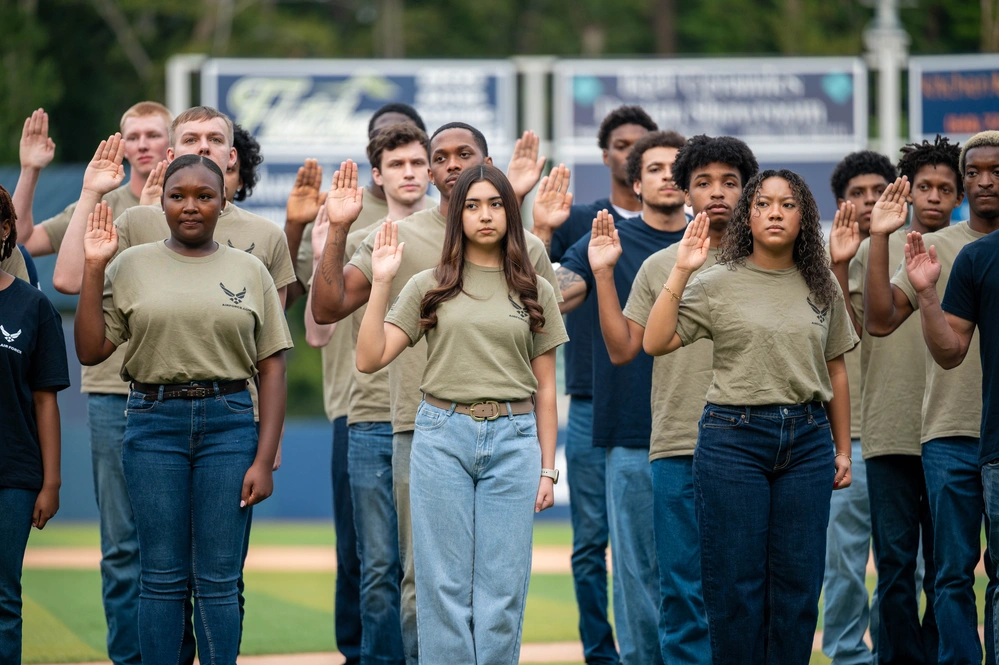
The Air Force wrapped the recruiting year with a bit over 100% of its active recruiting goal, but a historic number of potential recruits in its delayed entry program. The roughly 19,000 prospective airmen in the Delayed Entry Program would get the service to about half of its 2026 recruiting target directly out of the gate, Task and Purpose reported in September.
In addition to hitting its recruiting target three months early, the Air Force opted to stop offering selective retention bonuses in mid-May, another signal of confidence that its recruiting and retention prospects will stay strong.
But like the Space Force, the Air Force is taking pains to ensure that it’s getting the right recruits, rather than just filling seats at basic military training. Officials in July published a new announcement about the Stars and Stripes programs, which offer airmen and Guardians medals and even promotions for referring future troops who make it into the Delayed Entry Program or ship to training.
Related: Crews of the military’s oldest active bomber begin program to improve their brain performance
Marine Corps
The Marine Corps, which alone among the services hasn’t missed an active-duty recruiting target in recent years, proved it was a consistent recruitment performer in good times and bad. According to the Associated Press, the service exceeded its total recruiting target of 30,536 Marines by just one. According to the report, though, the service did move back boot camp shipping dates until after September for about 500 recruits to avoid overshooting authorized levels.
In keeping with its “We Don’t Promise You a Rose Garden” unabashedly tough and exclusive image, the Marine Corps has done the least shapeshifting of any of the services. Officials continue to credit the challenge the service levels to prospective recruits with its perennial success in making its numbers.
“Everywhere I’ve been in the country, the American people know the Marine Corps has very high standards and that we stick to them,” Lt. Gen. William Bowers, head of Marine Corps recruiting, told the AP. “If you try to appeal to everybody, you won’t get the people you maybe really want.”
Coast Guard
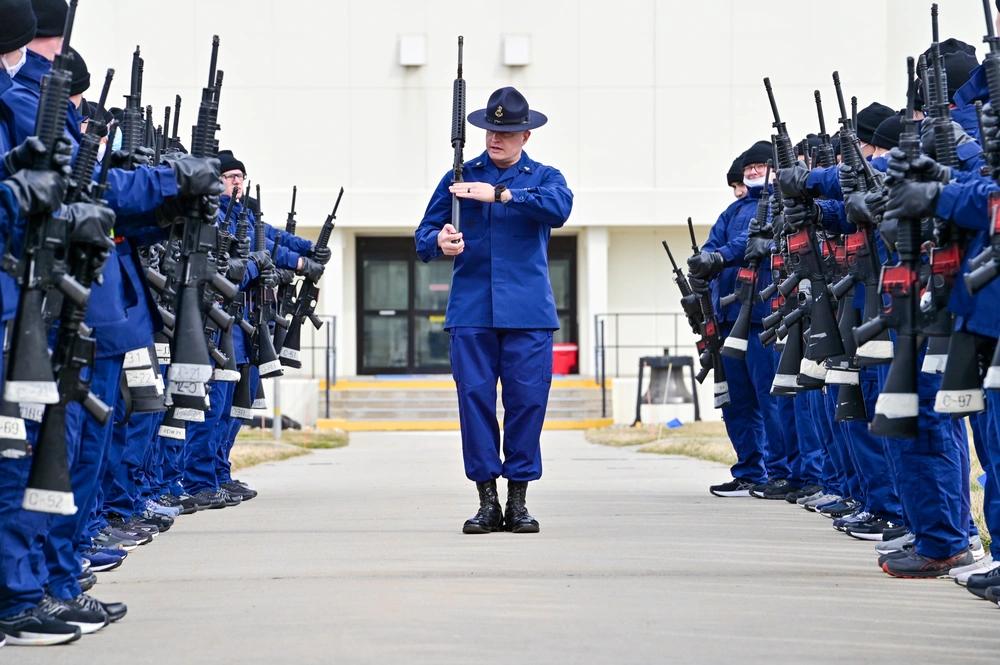
Of all the military services, the Coast Guard has had the longest-enduring recruiting challenges, having fallen short of its enlisted accessions target every year from 2019 to 2023. But earlier this year, the Government Accountability Office reported that the Coast Guard had exceeded its Fiscal Year 2024 recruiting target, bringing in 4,422 enlisted Coasties over a goal of 4,200.
While the service inconsistently self-reports its own recruitment data, the Department of Homeland Security announced in May that the Coast Guard was on pace to exceed 2025 recruitment goals by 110%, and had already brought in 4,250 recruits, beating the previous year-to-date number by 1,200. DHS pegged the increase in Coast Guard recruitment success – which it said aligned with a 200% increase in applications to the Secret Service – to a Trump administration order to triple Coast Guard presence at the U.S. maritime border and to focus more sharply on drug interdiction and human smuggling.
Editor’s Note: This article has been updated to include the data for the Coast Guard.
Feature Image: U.S. Army Recruits and Soldiers with the New Jersey National Guard’s Recruit Sustainment Program physical training at the National Guard Training Center in Sea Girt, N.J., July 20, 2025. The Recruit Sustainment Program is a program of the United States Army National Guard designed to introduce new recruits to the fundamentals of the U.S. Army before they leave for Basic Combat Training and Advanced Individual Training. (U.S. Army National Guard photo by Sgt. Seth Cohen)
Read more from Sandboxx News
- Viral video shows Korean company’s lifelike inflatable F-35 decoy
- Shield AI’s X-BAT promises to reshape the nature of drones
- New advances in submarine detection could upend nuclear deterrence as we know it
- These aircrew survival weapons have ensured US airmen stayed alive in rough situations
- Could Northrop’s YF-23 have been better than the F-22?
Related Posts
Sandboxx News Merch
-

F-35 ‘Evolution’ Poster
$22.00 – $28.00Price range: $22.00 through $28.00 Select options This product has multiple variants. The options may be chosen on the product page -

A-10 ‘Thunderbolt Power’ Framed Poster
$45.00 – $111.00Price range: $45.00 through $111.00 Select options This product has multiple variants. The options may be chosen on the product page
Hope Seck
Hope Hodge Seck is an award-winning investigative and enterprise reporter who has been covering military issues since 2009. She is the former managing editor for Military.com.
Related to: Military Affairs
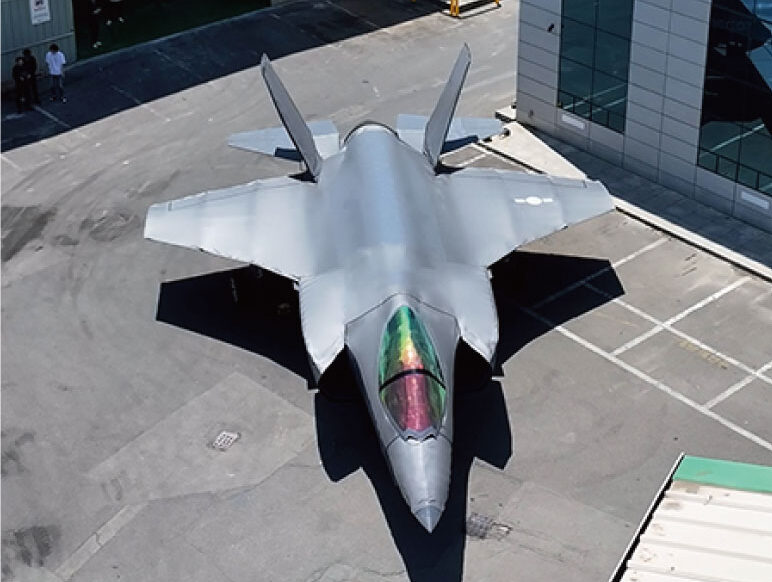
Viral video shows Korean company’s lifelike inflatable F-35 decoy
Sandboxx News
-

‘Sandboxx News’ Trucker Cap
$27.00 Select options This product has multiple variants. The options may be chosen on the product page -

‘AirPower’ Classic Hoodie
$46.00 – $48.00Price range: $46.00 through $48.00 Select options This product has multiple variants. The options may be chosen on the product page -

‘AirPower’ Golf Rope Hat
$31.00 Select options This product has multiple variants. The options may be chosen on the product page -

‘Sandboxx News’ Dad Hat
$27.00 Select options This product has multiple variants. The options may be chosen on the product page
